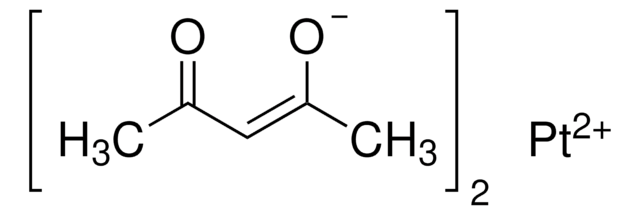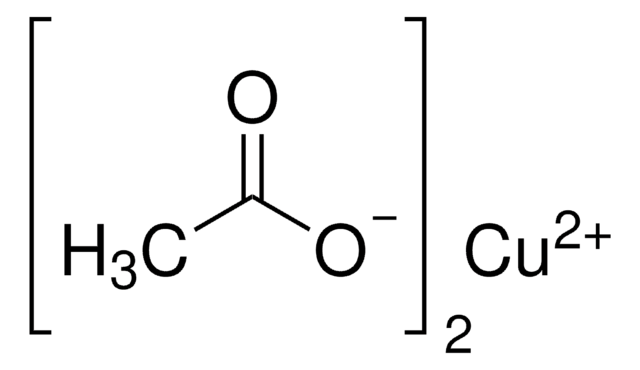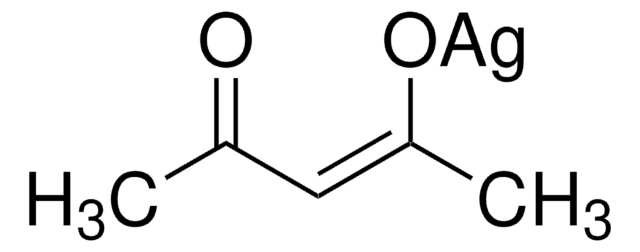514365
Copper(II) acetylacetonate
≥99.9% trace metals basis
Sinónimos:
2,4-Pentanedione copper(II) derivative, Bis(2,4-pentanedionato)copper(II), Cu(acac)2, Cupric acetylacetonate
About This Item
Productos recomendados
Quality Level
assay
≥99.9% trace metals basis
form
powder
reaction suitability
core: copper
mp
284-288 °C (dec.) (lit.)
SMILES string
CC(=O)\C=C(\C)O[Cu]O\C(C)=C/C(C)=O
InChI
1S/2C5H8O2.Cu/c2*1-4(6)3-5(2)7;/h2*3,6H,1-2H3;/q;;+2/p-2/b2*4-3-;
InChI key
QYJPSWYYEKYVEJ-FDGPNNRMSA-L
¿Está buscando productos similares? Visita Guía de comparación de productos
General description
Application
- A precursor for atomic layer deposition of copper oxide for all-oxide photovoltaics.
- A catalyst for the aziridination of styrene.
- A catalyst for Huisgen-Click reaction to synthesize 1,2,3-triazoles.
signalword
Warning
hcodes
Hazard Classifications
Eye Irrit. 2 - Skin Irrit. 2 - STOT SE 3
target_organs
Respiratory system
Storage Class
11 - Combustible Solids
wgk_germany
WGK 3
flash_point_f
Not applicable
flash_point_c
Not applicable
ppe
dust mask type N95 (US), Eyeshields, Gloves
Elija entre una de las versiones más recientes:
¿Ya tiene este producto?
Encuentre la documentación para los productos que ha comprado recientemente en la Biblioteca de documentos.
Los clientes también vieron
Artículos
Nanostructured Materials Through Ultrasonic Spray Pyrolysis
Advances in materials have often been led by the development of new synthetic methods that provide control over size, morphology and structure. The preparation of materials in a scalable and continuous manner is critical when development moves beyond lab-scale quantities.
Nuestro equipo de científicos tiene experiencia en todas las áreas de investigación: Ciencias de la vida, Ciencia de los materiales, Síntesis química, Cromatografía, Analítica y muchas otras.
Póngase en contacto con el Servicio técnico














